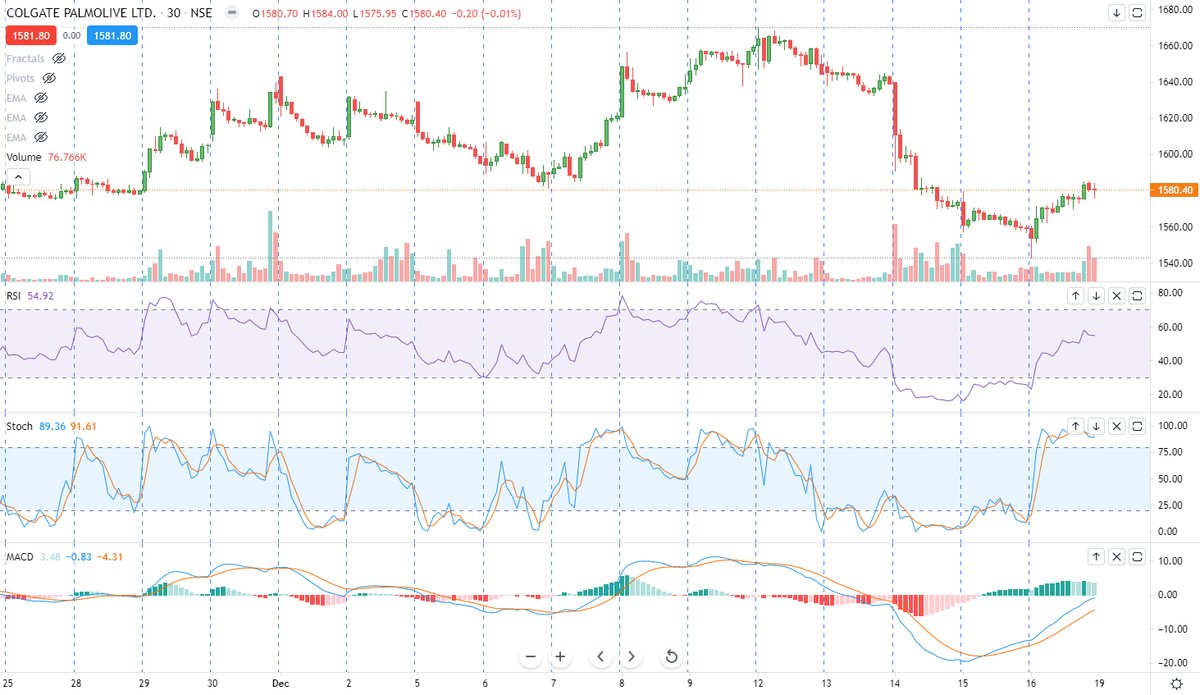🚨⚠️BTST option buying strategy for stocks⚠️🚨
🧵
#StockMarket #NSE
Tags:
@bhatiamanu @kuttrapali26 @Simple_trader_ @KommawarSwapnil
🧵
#StockMarket #NSE
Tags:
@bhatiamanu @kuttrapali26 @Simple_trader_ @KommawarSwapnil
Things that you need to understand
1⃣ Fractal- this is basically plotting pivots
2⃣ Trend identification through pivots
Let's get started
1⃣ Fractal- this is basically plotting pivots
2⃣ Trend identification through pivots
Let's get started
How to plot pivots
1⃣ Use 📍Williams Fractals indicator from @tradingview
You can also do this manually, the indicator just simplifies your task
1⃣ Use 📍Williams Fractals indicator from @tradingview
You can also do this manually, the indicator just simplifies your task

How Fractals are plotted
🟢Green fractal = high of 5 candles to the left and right should be lower than the high of the fractal candle
🔴Red fractal = low of 5 candles to left and right should be higher than low of the fractal candle
🟢Green fractal = high of 5 candles to the left and right should be lower than the high of the fractal candle
🔴Red fractal = low of 5 candles to left and right should be higher than low of the fractal candle

Step 1⃣ To identify the BTST setup
🟢 On a daily time frame identify an uptrend
🟢Mark the 5th day with a vertical line after which our higher high is confirmed.
🟢 On a daily time frame identify an uptrend
🟢Mark the 5th day with a vertical line after which our higher high is confirmed.

Step 2⃣How and when to take an entry
🟢Time frame to be used is 1 hr
🟢Mark the fractal high on 1 hr time frame as explained in the image
🟢Buy ATM or slight OTM contract if 1hr closing is 0.5% up or down from market level
🟢Time frame to be used is 1 hr
🟢Mark the fractal high on 1 hr time frame as explained in the image
🟢Buy ATM or slight OTM contract if 1hr closing is 0.5% up or down from market level

Step 3⃣ Profit or Loss booking
🟢Don't keep a cap on your profit or book profit as per your comfort coz it might really give an awesome return.
🟢book loss at 30% of premium value or as per your risk appetite
🟢Don't keep a cap on your profit or book profit as per your comfort coz it might really give an awesome return.
🟢book loss at 30% of premium value or as per your risk appetite
example when trade is not triggered
🟢upper trend identified in the daily time frame
🟢On 1 hr time frame buying is not triggered as the closing of the next days is not in the range of 0.5%
🟢upper trend identified in the daily time frame
🟢On 1 hr time frame buying is not triggered as the closing of the next days is not in the range of 0.5%

😇On the journey to share 100 educational threads.
The goal is to educate people about markets one thread at a time.
Follow👥@AakashSSawant1 for more such content
Checkout my Twitter timeline for the previous 2⃣5⃣ Strategies/educational content
docs.google.com/spreadsheets/d…
The goal is to educate people about markets one thread at a time.
Follow👥@AakashSSawant1 for more such content
Checkout my Twitter timeline for the previous 2⃣5⃣ Strategies/educational content
docs.google.com/spreadsheets/d…
• • •
Missing some Tweet in this thread? You can try to
force a refresh













